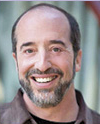Ever come across a poem that encapsulates what you’ve read lately or thought about in the past? I found one today in a book I was sampling on Amazon, The Drop That Became the Sea: Lyric Poems, a collection of poems written by Yunus Emre, (1240-1321), translated by Kabir Helminski and Refik Algan.
Yunus Emre was the first in a great tradition of Turkish Sufi troubadours who celebrated the Divine Presence as the intimate Beloved and Friend. Called the greatest folk poet in Islam, the songs of this Sufi dervish are still popular today.
He was a contemporary of Rumi, who lived in the same region of Anatolia. Rumi composed his collection of stories and songs for a well-educated urban circle of Sufis, writing primarily in the literary language of Persian. Yunus Emre, on the other hand, traveled and taught among the rural poor, singing his songs in the Turkish language of the common people.
A story is told of a meeting between the two great souls: Rumi asked Yunus Emre what he thought of his great work the Mathnawi. Yunus Emre said, “Excellent, excellent! But I would have done it differently.” Surprised, Rumi asked how. Yunus replied, “I would have written, ‘I came from the eternal, clothed myself in flesh, and took the name Yunus.'” That story perfectly illustrates Yunus Emre’s simple, direct approach that has made him so beloved.
The poem I’m referring to begins, We entered the house of realization. Inside they find the earth and sky, night and day, the planets, the many veils in the body, what the scriptures say, and more. In that realized state, the poet witnesses everything inside the body; the infinite within the finite, the eternal within the temporal. His body is cosmic, an expression of totality.
It reminded me of the work of Maharaja Adhiraj Rajaraam (Professor Tony Nader, MD, PhD), a neuroscientist and Vedic scholar. Under the guidance of His Holiness Maharishi Mahesh Yogi, Professor Nader showed how the individual is cosmic.
The body, he says, is a manifestation of Natural Law—the Veda and Vedic Literature—the underlying blueprint that creates the individual body and the cosmic body, the Universe, a microcosm of the macrocosm. Yatha pinde tatha brahmande. See link to video at end of this article.
One aspect of the Vedic Literature is Jyotish, Vedic Astrology. Dr. Tony Nader shows a precise one-to-one relationship between the fundamental structures and functions of human physiology (Individual life) and the fundamental structures of Natural Law (Cosmic life). These fundamental structures of Natural Law connect individual intelligence with cosmic intelligence — the basic structures of the human nervous system with their cosmic counterparts. In this chart, the nine Grahas (planets), are shown where they are found in the different aspects of our physiology and their influences.
This first book by Dr. Nader, Human Physiology — Expression of Veda and the Vedic Literature, discusses all 40 aspects of the Vedic Literature and their expressions in the body.
Over a decade in the making, Dr. Nader’s new book, Ramayan in Human Physiology, reveals an understanding of the underlying unity that makes us human — the eternal reality of the Ramayan in the structure and function of the human physiology. Surprisingly, the Ramayan is not just a mythic tale assigned to an ancient culture in a distant past, but a description of the universal transformations continually taking place within our own bodies. Here is a book preview.
Yunus Emre expresses a similar understanding in poem #4, page 20, chapter I, The Dervish Way, in The Drop That Became The Sea.
We entered the house of realization,
we witnessed the body.
The whirling skies, the many-layered earth,
the seventy-thousand veils,
we found in the body.
The night and the day, the planets,
the words inscribed on the Holy Tablets,
the hill that Moses climbed, the Temple,
and Israfil’s trumpet, we observed in the body.
Torah, Psalms, Gospel, Quran—
what these books have to say,
we found in the body.
Everybody says these words of Yunus
are true. Truth is wherever you want it.
We found it all within the body.
A related example was highlighted by Dr. Nader in a press conference when he referenced ‘Abdu’l-Bahá [quoting The Imam Ali], from The Secret of Divine Civilization: “Dost thou think thyself only a puny form, when the universe is folded up within thee?”
Speaking of microcosm-macrocosm, here is an interesting saying from The Conversations (Maqalat) of Shams of Tabriz (Hazret Shams al-Din of Tabriz), Rumi’s master, which gives you a different perspective on the internal life of a saint:
The microcosm is hidden in the creation of man
and the macrocosm is the outer universe.
But for prophets the outer universe is the microcosm
while the inner universe ıs the macrocosm.
These two videos of Maharishi Mahesh Yogi answering questions from the press: As is the cosmic life, so is the individual life, and I am the Self, I am the body, I am the Veda, I am the universe, I am totality, explain the cosmic significance of these Vedic expressions and their practical applications in our daily lives.
See this New Video: Dr. Tony Nader speaks about the Ramayana in Human Physiology, which explains how the whole body is made of Veda, which also structures the cosmic body, the universe, and how the activities described in the Ramayana are a scientific description of the growth and evolution of the human physiology to it’s fully developed enlightened state.
See Sufi poet Hakim Sanai says transcend belief to enter into the mystery.
See Yunus Emre says Wisdom comes from Knowing Oneself — a Singularity that contains the Whole


